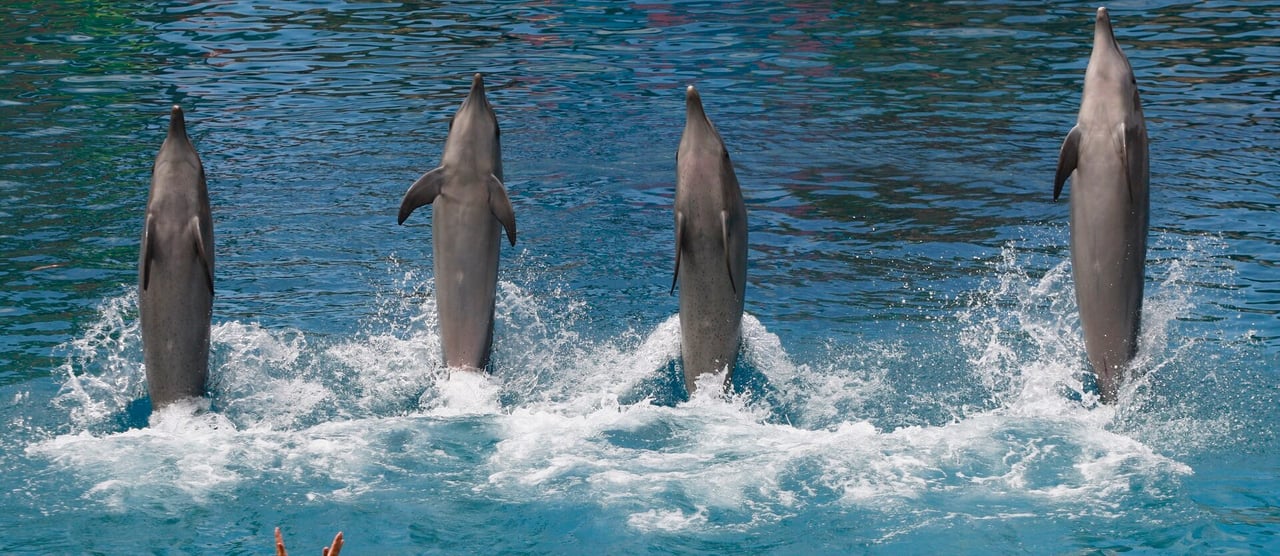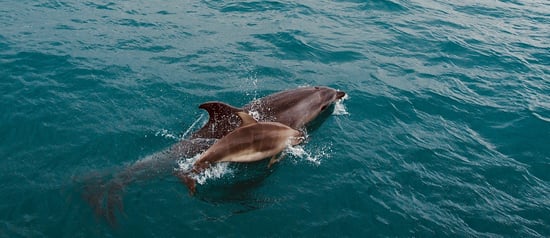End dolphin suffering
Call on the Queensland government to ban captive dolphin breeding and stop captive dolphins shows and direct interactions.

Contrary to the popular belief that all captive dolphins are born in captivity, many of those currently in captivity were once wild and free. While some water parks obtain dolphins legally, others find that doing so takes more time and money than they are willing to invest. As a result, a thriving illegal trade in wild-caught dolphins has emerged to meet the demand.
The capture process is extremely violent, inherently cruel and detrimental to the overall population. Dolphins are chased to exhaustion by people in speedboats, who separate a few dolphins from the rest of the group and corral them with a net. In a panic, the dolphins often injure themselves when they ram the net trying to escape. Injury and death (usually by drowning) are common. Studies suggest that mortality rates increase six-fold after capture. The dolphins may then be subjected to further trauma during travel in boats, shallow pens on trucks, or between countries on long-haul flights.
Dolphins are intelligent and social creatures that, in the wild, interact with hundreds of pod-mates, hunt communally, and have entire coastlines as their playground. In captivity, all of this is lost. Social partners are restricted to a handful of tank-mates. Captive dolphins are fed dead fish (wild dolphins only catch and eat live fish) and they face a profound reduction in space and stimulation.
Dolphins in the wild may swim up to 40 or 50 miles in a day and can dive to depths of hundreds of feet. Even in the largest captive facilities, dolphins have access to less than 1/10,000 of 1% (0.000001%) of the space available to them in their natural environment. Because of this, dolphins in captivity are often restricted to swimming in circles. In many dolphins, this behaviour is a sign that the dolphin is suffering psychologically; it is engaging in what is known as a stereotypical behaviour. For an inquisitive, intelligent creature like the dolphin, a barren tank offers no exploratory stimuli compared to the vast, complex ocean.
Any tank or enclosure is too small for a dolphin.
According to US regulations, dolphin pens only need to be 24 x 24 feet and only six feet deep. In warm weather such shallow water heats quickly. This can be extremely uncomfortable, and often deadly, for dolphins unable to escape to deeper, cooler waters. Not only is there no relief from the heat, but also the dolphin's sensitive skin can be exposed to the sun's scorching rays, causing blisters and sores. Also, in cement pools chlorine is added to keep bacteria levels safe for humans. The levels of chlorine used wreak havoc on a dolphin's skin and eyes, sometimes even rendering them completely blind.
Just because standards exist doesn't mean that they're appropriate, well-enforced, or acceptable. No captive facility, no matter how much space it provides, how well intentioned it is, or how hard it tries, can adequately provide for a dolphin's complex needs.
Dolphins in captivity are not given the option to end interactions or performances when they would like to. They are trained to perform through ‘operant conditioning'. For many animals this means that satisfaction of hunger is dependent on performing tricks; for others, hunger is deliberately induced so the training will be effective. Though a complete food portion is ultimately provided each day, the use of food as a training tool reduces some animals to little more than beggars.
Captive dolphin programs often train dolphins to perform tricks that people equate with human responses and emotions. Movement of the pectoral flippers is taken to mean that the dolphins are waving a greeting. Vocalizing seems to indicate that the animals are “speaking” to the crowd. Or, the dolphins swim directly up to tourists entering the water, apparently signalling their enthusiasm to interact. In reality, these are highly unnatural behaviours.
Every time someone buys a ticket to a dolphin show or even to a facility or theme park that holds captive dolphins, they contribute to the suffering of these remarkable creatures. Like any other business, the dolphin captivity industry is based on supply and demand. As long as people are willing to buy tickets to watch dolphins (whether to perform tricks or to just view them through a glass wall), dolphins will be kept in captivity and trained to perform for audiences. Consumers have the power to stop the exploitation of dolphins by simply not buying tickets.
The dolphin's toothy grin masks its suffering and contributes to the myth that dolphins in theme parks enjoy a happy life. In truth, dolphins cannot move their facial muscles to communicate inner feelings like humans can. Dolphins appear to smile even while injured or seriously ill. The smile is a feature of a dolphin's anatomy unrelated to its health or emotional state.
Nobody knows the exact average lifespan of captive dolphins, and records of births and deaths maintained by the industry are only made available to the public on a voluntary basis. In the case of wild-caught dolphins, there is no accurate method to tell the age of the animal and therefore the age at the time of death can only be estimated or remains unknown.
Regardless of whether it can yet be scientifically determined that life spans differ between captive and wild animals, it is a fact that seemingly healthy and normal captive cetaceans die at relatively early ages on a regular basis, usually with little or no warning and due to causes very different from their wild counterparts. In short, very few captive dolphins live to an old age and, even if they do, they perform until they are unable to.
Captive dolphins often work 12-hour days without a break. Whether it is performing for the public or participating in dolphin petting pool encounters, dolphins are forced to participate by conditioning. During performances or petting sessions, their ears are assaulted by blaring music and the noise of people splashing water or slapping the sides of the tank to get their attention. In petting pools and feeding programs, the dolphins' health may be further compromised by people placing items such as sunglasses, cigarettes, stones, coins, food, and metal souvenirs into the mouths of dolphins. All of this takes a heavy toll on dolphins often resulting in stress-related illnesses and even death.
The public is often taken in by the dolphin's ‘smile' and assumes they are gentle, willing playmates. But make no mistake – these are wild animals and the smile is simply an anatomical quirk; it is not a reflection of the dolphin's emotional state. People would not dream of putting their children or themselves in a cage with wolves, lions, or tigers. This natural caution is lost around dolphins.
Sometimes dolphins express their frustration through aggression either to people, other dolphins, or even by self-mutilation. Dolphins (including those born in captivity) are large, powerful predators, perfectly capable of harming humans. There have been instances where dolphin aggression has led to pushing people into deeper water, biting, and head-jerking. Injury reports document broken bones, skin abrasions and other injuries.
As public perception changes, dolphin theme parks disguise their entertainment focus as being ‘educational' in an attempt to validate their existence. In reality, viewing captive animals gives the public a false picture of the animals' lives and provides no educational value. Worse yet, it desensitizes people to captivity's inherent cruelties.
Many captive facilities also claim to focus on conserving the species. In fact, less than 10% of captive facilities are involved in dolphin conservation programs to reintroduce captive-bred animals into the wild. The amount spent on these programs is a mere fraction of the income generated by these facilities. These facilities may promote themselves as stranding and research centres, but:
The best way to commune with dolphins is from the deck of a dolphin watch operation that follows a responsible code of conduct or, better yet, from shore, where you can be sure that you're not harming them and they can't harm you.
Call on the Queensland government to ban captive dolphin breeding and stop captive dolphins shows and direct interactions.
Around the world, more than 3,000 dolphins are used as entertainers. Become a dolphin defender, pledge to only see dolphins in the wild.
Dolphins are warm-blooded marine mammals that breathe air. Learn more about these highly intelligent, sociable and playful animals, with these dolphin facts.

Join thousands of animal lovers fighting to protect wildlife and give farmed animals good lives. Sign up now to receive emails with all the ways you can help.
Sign up